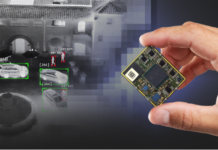
The electronics industry has been at the forefront and the first sector in technology adoption. As tech advancements are constantly evolving so rapidly, adapting has been a prerequisite for these businesses to remain afloat in this competitive landscape. One of the most recent evolutions these companies have embraced is artificial intelligence (AI). (1)
The AI tool is known for its ability to identify patterns and insights in data that’d be difficult for humans to discern. Hence, an annotation tool is needed to make this software work effectively, thus, a foundation of AI-driven electronics design. This tool will train machine learning models with good data annotation, producing products with increased functionality and smarter performance. Without the annotation, the AI algorithm wouldn’t be able to understand the data as well as produce smarter electronics. (2)
Gadgets of tomorrow
Nowadays, more and more electronics companies are integrating AI into their products. Smartphones, laptops, computers, and household appliances, among others, are becoming more intelligent due to this incorporation. This level of sophistication isn’t only limited to traditional electronics, though. AI is also being used in vehicles and medical equipment. This innovation has become a staple in the electronics industry as it allows businesses to differentiate themselves from the competition and improve customer satisfaction. (1)
This article will dig deeper into the examples of tech empowered by AI and how it produces smarter electronics.
1. Facial recognition
Facial recognition is one of the most trendy and sought-after applications of AI. It analyses a person’s facial features and compares them to a pre-stored image or template. This technology is widely used in security systems such as airports, banks, and other high-security locations. This software is also available on smartphones, laptops, and other portable devices. (3)
The primary purpose of facial recognition is to identify individuals and track their movements. As mentioned, it’s becoming more accurate due to AI-powered annotation tools in machine learning. This tool is part of a process of adding valuable data to images or videos, which improves accuracy and high-quality recognition over time. As a result, the software becomes faster, more clever, and more reliable.
For facial recognition, AI makes electronics smarter by giving them thousands, sometimes millions, of images of faces, contours, skin tones, hairlines, bone structures, and others. This software is helpful in scenarios such as tracking down lawbreakers or culprits at a crime scene. This approach will be more advantageous for law enforcement than traditional methods such as eyewitness testimonies. The combination of video footage and facial recognition technology can identify and apprehend the perpetrator quickly and efficiently.
2. Voice recognition or command
AI enables voice activation or control in many devices. This hands-free feature simplifies tasks for the user. For instance, many smartphones now have a voice recognition assistant app such as Siri, Cortana, or Google Assistant to help with various activities such as sending messages, giving information on something, getting directions, setting alarms, and placing phone calls. (4)
More examples are Amazon Echo, Alexa, or Google Home for household use. This home automation allows users to control devices such as lights, fans, and television using voice commands. This is advantageous for people with disabilities who may have difficulty using their hands. On top of that, voice recognition is mainly used for security purposes. It identifies the user and grants access to specific devices or accounts if the voice matches the pre-recorded one. (4)
For devices with voice recognition capability, AI can make them smarter by feeding them with thousands of pieces of data pertaining to inflection, pitch, accent, phonetics, language, and others. How do these devices work? These devices have tiny microphones that pick up your voice and send it to the AI for interpretation. The AI then does its job by turning your voice into text or performing the requested action. This enhanced usability helps consumers maximize their electronics’ potential while saving time and effort.
3. Autonomous system
Most electronics these days have some form of an autonomous system. It’s a system that can operate without human input, and AI has a significant role in making this possible. After all, consumers these days expect electronics to be brilliant and autonomous, providing them with a convenient and effortless experience. (5)
One of the most popular autonomous technologies is the self-driving car. It’s an AI-powered system that can navigate and control a vehicle without human input. This system relies on sensors and cameras to detect obstacles in the surrounding area, park the car appropriately, and plan a route accordingly. Other examples are drones, vacuum cleaners, and lawnmowers.
Autonomous systems, especially self-driving cars, make use of computer vision and other sensors, which also need lots of data. For example, the car’s sensors should be able to distinguish between the sidewalk and the street, or a human standing by the wayside and a statue landmark.
The advantage of having an autonomous system can’t be overemphasized. That’s why electronics businesses incorporate AI into their products to stand out in the market and deliver a delightful experience to their consumers. It can free up users’ time and allows them to multitask.
Bottom line
It’s no secret that AI is changing the world as people know it. This innovative technology is essentially a part of everyone’s daily lives, and it’s only going to get more pervasive in the future. It has permeated almost every business, especially the electronics industry. This is because AI provides smarter and more user-friendly devices, leading to a more convenient experience for the consumer.
References:
1. “How AI-powered devices are remodeling the Consumer Electronics Industry” Source: https://www.pathpartnertech.com/how-ai-powered-devices-are-remodeling-the-consumer-electronics-industry/
2. “M1 – Annotation tool” Source: https://thesiliconreview.com/2021/12/m1-annotation-tool
3. “How Data Annotation Supports Facial Recognition Projects” Source: https://keymakr.com/blog/how-data-annotation-supports-facial-recognition-projects/
4. “What Is Voice Recognition? How It Works & What It’s Used For” Source: https://recfaces.com/articles/what-is-voice-recognition
5. “What is an “Autonomous System?” Source: https://www.udacity.com/blog/2018/09/what-is-an-autonomous-system.html



















